Regular motorcycle maintenance includes checking tire pressure, oil levels, brake fluid, and chain tension. Inspect lights, brakes, and cables for wear. Clean and lubricate the chain, and ensure bolts are tight. Regularly replace air filters and spark plugs, and schedule periodic professional servicing.
Maintaining your motorcycle ensures optimal performance and extends the life of your bike. Riders know that a well-kept machine means safer, more enjoyable travel. Whether commuting to work or starting a long-distance adventure, checking and replacing your motorcycle’s fluids are essential.
Tires are your direct link to the road. Keeping them properly inflated and assessing their condition regularly is of utmost importance. Brake pads, being critical to your safety, require routine inspections and replacements when worn down.
By adhering to a simple yet consistent maintenance schedule, you can greatly reduce the risk of mechanical failures and enjoy a smoother ride. Your motorcycle is not just a vehicle but a dependable companion on every journey, and treating it as such with proper care will ensure it remains reliable mile after mile.
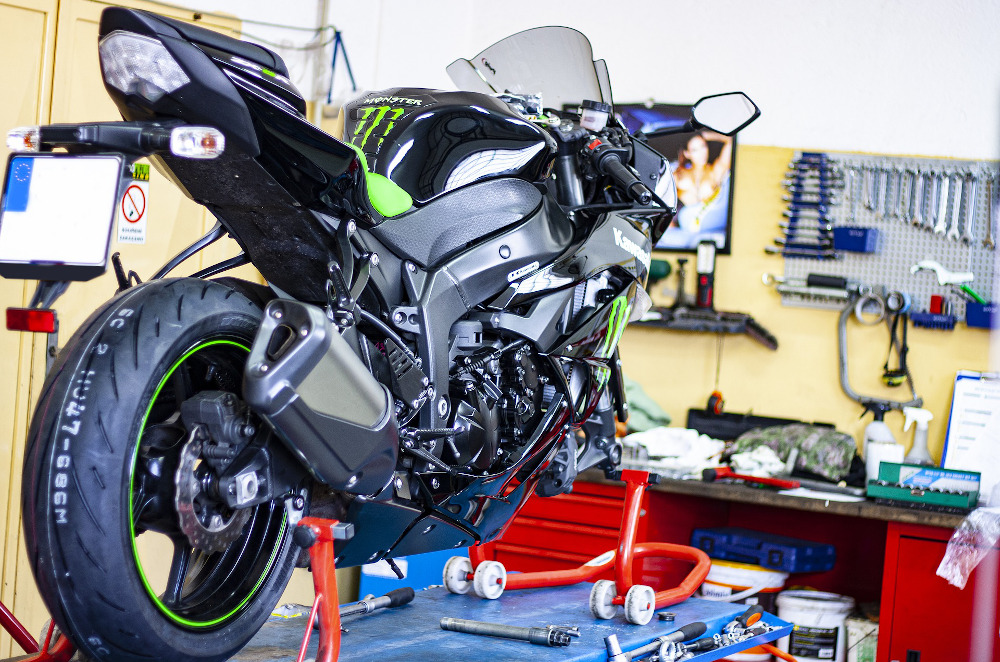
Credit: www.motodeal.com.ph
Table of Contents
Routine Motorcycle Maintenance Demystified
Keeping a motorcycle in top condition is no small feat. It involves a systematic check on various parts of the bike. It is essential to ensure your motorcycle performs well and stays reliable. Let’s unwrap the mystery of regular motorcycle upkeep.
Importance Of Regular Check-ups
Consistent check-ups prevent sudden breakdowns. They increase safety on the road. A well-maintained bike is crucial for a smooth ride.
- Engine Oil: Check monthly. Replace as advised by the manual.
- Tire Pressure: Inspect weekly. Correct pressure safeguards against wear.
- Brakes: Examine before every ride. Safety must never be compromised.
Preventive Maintenance For Longevity
Preventive maintenance extends a motorcycle’s life and boosts performance. Here’s what you can do:
| Task | Frequency |
|---|---|
| Clean/Replace Air Filter | Every 12,000 miles |
| Check Spark Plugs | Every 30,000 miles |
| Lubricate Chain | Every 600 miles |
Stay on top of these maintenance tasks. They reduce wear and tear. Regular care means fewer repairs. It keeps your bike running like new.
Initial Inspection: Where To Start
Every motorcycle enthusiast knows that regular maintenance keeps your ride smooth and safe. But where should you start? Initial inspection is the first step. It helps spot potential issues before they escalate. In this section, we’ll guide you on how to begin.
Visual Check: Beyond Aesthetics
A thorough visual check involves more than admiring the bike’s shine. Look for signs of wear, damage, or anything unusual. Here’s what to focus on:
- Tires: Check for cuts, bulges, and tread depth
- Brakes: Inspect brake pads for wear and discs for scratches
- Frame: Look for cracks or bends in the motorcycle frame
- Lights: Ensure all lights and indicators function correctly
Checking Fluid Levels And Quality
Fluids are the lifeblood of your motorcycle. Ensure they are at the right level and condition. Here is a simple breakdown:
| Fluid | Check for |
|---|---|
| Engine oil | Correct level, color, and debris presence |
| Coolant | Appropriate level and no signs of leakage |
| Brake fluid | Right level and clarity |
| Fuel | Enough for your trip and no contamination |
Regular checks keep your motorcycle’s engine healthy and your rides trouble-free.
Critical Engine Care
Critical Engine Care is essential for the longevity and performance of your motorcycle. Just like your heart needs clean arteries to function, your motorcycle’s engine requires proper maintenance. Ensuring your engine is in tip-top shape means focusing on two key areas: oil changes and air filter maintenance.
Oil Changes: The Lifeblood Of Your Motorcycle
Regular oil changes keep your motorcycle’s engine running smoothly. Think of oil as the lifeblood of your ride. It lubricates moving parts, reduces friction, and helps dissipate heat. Refresh the oil according to the manufacturer’s recommendations, typically every 3,000 to 5,000 miles, to avoid engine wear and to maintain peak performance.
- Check the oil level before each ride to catch any potential issues early.
- Choose the right oil grade for your specific motorcycle to ensure the engine runs efficiently.
- Dispose of the old oil responsibly to protect the environment.
Air Filter: Breathing Clean
An engine breathes air to combust fuel. The air filter acts as the motorcycle’s lungs, ensuring that clean air reaches the engine. A clogged or dirty air filter can lead to reduced performance and increased fuel consumption.
- Clean or replace the air filter regularly to prevent dust and debris from entering the engine.
- Different motorcycles have different air filter maintenance schedules. Check your owner’s manual for specific guidelines.
- Opt for high-quality air filters that can enhance airflow and improve your motorcycle’s efficiency.
Proper engine care is not just about immediate benefits. It’s about investing in the future of your motorcycle. Keep the engine happy, and your motorcycle will reward you with reliability and vitality for the long haul.
Ensuring Rider Safety
Regular maintenance of a motorcycle is important. It keeps your bike running smoothly and ensures safety on the road. Safety is the rider’s priority. Simple checks and routine care can prevent accidents. Below, discover key maintenance tasks. They will help maintain optimal performance and ensure every ride is a safe one.
Brake Maintenance For Optimal Performance
Brakes are vital for safety. They must respond instantly and reliably. To guarantee that your brakes are always at peak performance, you should regularly:
- Inspect brake pads for wear and tear.
- Check brake fluid levels.
- Clean and lubricate brake components.
- Look for signs of damage or corrosion.
Bike handling and rider safety depend on well-maintained brakes. Never overlook any change in brake performance.
Tire Condition And Pressure Checks
Tire integrity is critical for motorcycle stability. You should regularly:
- Examine tires for cracks or bulges.
- Ensure tread depth is within legal limits.
Proper tire pressure ensures better grip and fuel efficiency. A pressure gauge can measure it. Refer to the motorcycle manual for the correct pressure. Regular checks support a safer ride.
Electrical Systems And Battery Care
Electrical Systems and Battery Care are crucial for a motorcycle’s reliable performance. Regular checks keep the ride smooth and safe. The electrical system powers the ignition and lights. The battery starts the engine. Both need routine attention.
Battery Maintenance Practices
Proper battery care prevents breakdowns and extends battery life. Implement these practices:
- Check charge levels monthly. Use a voltmeter.
- Keep terminals clean and secure. Prevent corrosion.
Always use distilled waterfor refillable batteries.- Store in a cool, dry place during off-seasons.
- Tighten connections for stable power supply.
Lighting And Electrical Connections
Maintain lighting and electrical systems for safety:
- Inspect all lights regularly. Check for damage.
- Replace burnt-out bulbs immediately.
- Secure loose wires to avoid disconnections.
- Use dielectric grease on connectors to prevent moisture.
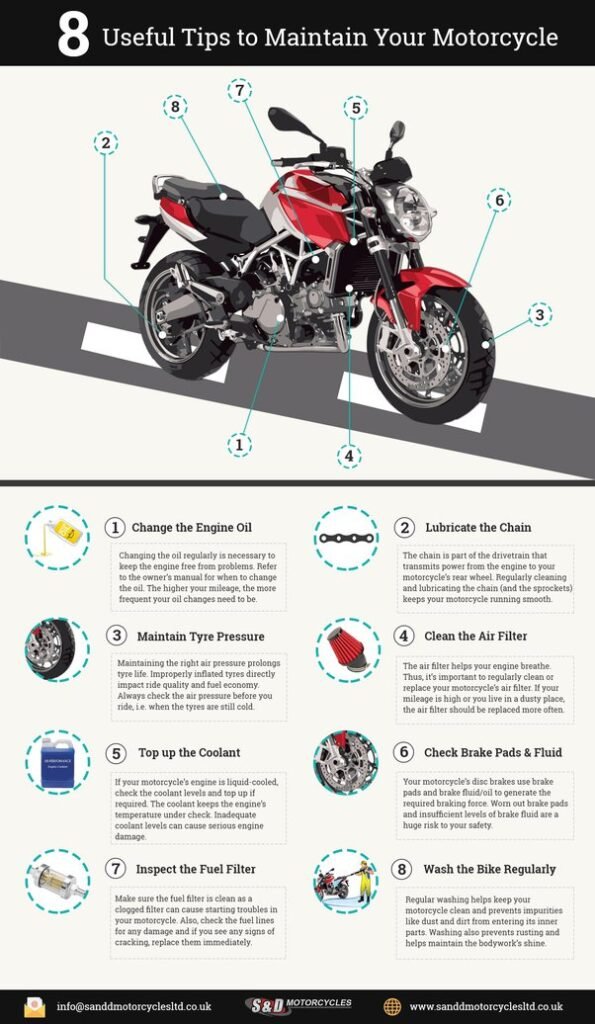
Credit: www.quora.com
Structural Integrity And Aesthetics
Ensuring a motorcycle’s structural integrity and aesthetics keeps your ride safe and visually appealing. Routine checks and fixes maintain the bike’s performance and can prevent costly repairs. This guide highlights key maintenance areas.
Chain Maintenance For Smooth Rides
A well-maintained chain equals a smooth ride. Over time, chains stretch and collect dirt, leading to inefficiency and potential danger.
- Clean the chain with a brush and degreaser regularly.
- Inspect the chain for wear and replace if needed.
- Lubricate the chain after cleaning to reduce friction.
Frame And Bodywork Preservation Techniques
Caring for a motorcycle’s frame and bodywork preserves its beauty and structural soundness.
- Wash the bike to remove grime and chemicals that can corrode the frame.
- Check the frame for cracks or rust and address them promptly.
- Apply a protective sealant to prevent paint and metal from fading and oxidation.
| Action | Purpose | Frequency |
|---|---|---|
| Cleaning | Prevents build-up | Every 500 miles |
| Inspection | Identifies issues | Monthly |
| Protection | Shields surfaces | Every wash |
Keep to these practices for a bike that rides smoothly and turns heads with its shine.
Seasonal And Long-term Storage
Regular maintenance ensures a motorcycle stays in great shape through every season. Yet, two periods demand special care: seasonal changes and long-term storage. Below, vital tips guide bike enthusiasts on how best to preserve their two-wheeled companions during these crucial times, keeping them safe, secure, and ready to roar back to life seamlessly.
Winterization Tips For Your Motorcycle
As temperatures fall, preparing your motorcycle for winter’s embrace is essential. Winterization isn’t just about protection—it’s about preserving the life and performance of your motorcycle. Follow these tips to shield your bike from winter’s harsh effects.
- Fuel System: Add a fuel stabilizer to prevent varnish and corrosion.
- Battery Care: Disconnect and use a trickle charger to maintain charge.
- Oil Change: Replace old oil to prevent contaminants from causing damage.
- Anti-Freeze: Check levels and consistency for adequate protection.
- Cover Up: Use a breathable motorcycle cover to shield from dust and moisture.
Long-term Storage Checklist
If plans require you to store your motorcycle for months on end, every detail counts. Adhere to this checklist and return to a motorcycle as vibrant as the day it was stored.
| Action | Reason |
|---|---|
| Clean Thoroughly | Prevents rust and corrosion. |
| Lubricate Moving Parts | Guards against stiffness and wear. |
| Inflate Tires | Avoids flat spots and preserves tires. |
| Protect Leather | Condition to prevent drying and cracking. |
| Block Exhaust | Keeps out pests and moisture. |
Inspect the space where your bike will rest. Choose a dry, secure area. Also, consider the position of your motorcycle—upright is often best to minimize tire and suspension strain. When the time comes, your motorcycle will thank you by starting up without a fuss, ready for the miles ahead.
FAQ
How Often Should You Service Your Motorcycle?
Regular motorcycle service should ideally occur every year or after 5,000 miles, whichever comes first. This maintains optimal performance and safety.
What Are Essential Motorcycle Maintenance Tasks?
Key maintenance tasks include changing the oil, checking tire pressure, and inspecting brakes. Regular chain lubrication and air filter checks are also critical.
Can I Do Motorcycle Maintenance Myself?
Yes, basic motorcycle maintenance like oil changes, chain adjustments, and brake inspections can be done at home with the right tools and knowledge.
What Tools Are Needed For Diy Motorcycle Maintenance?
Basic tools for motorcycle maintenance include a set of wrenches, screwdrivers, pliers, a tire pressure gauge, and a chain lubricant. A service manual for your specific model is also helpful.
Bottom Line
Maintaining your motorcycle is key to a safe, smooth ride. Regular inspections and upkeep prevent breakdowns and extend your bike’s life. Prioritize oil changes, brake checks, and tire rotations. Consult your owner’s manual for specific needs, and always ride with confidence, supported by consistency in care.
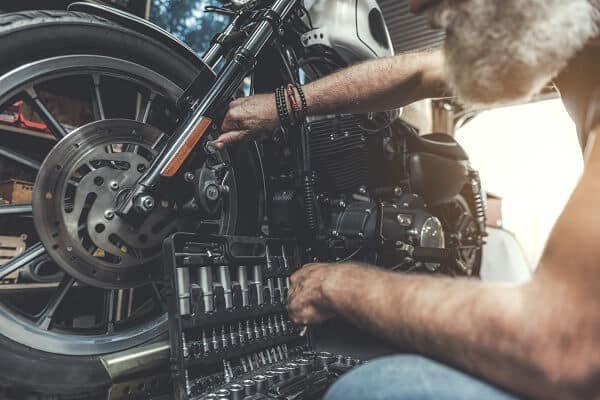

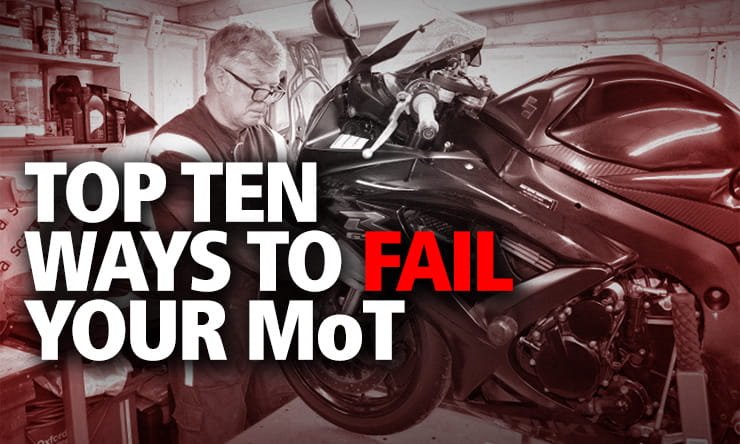
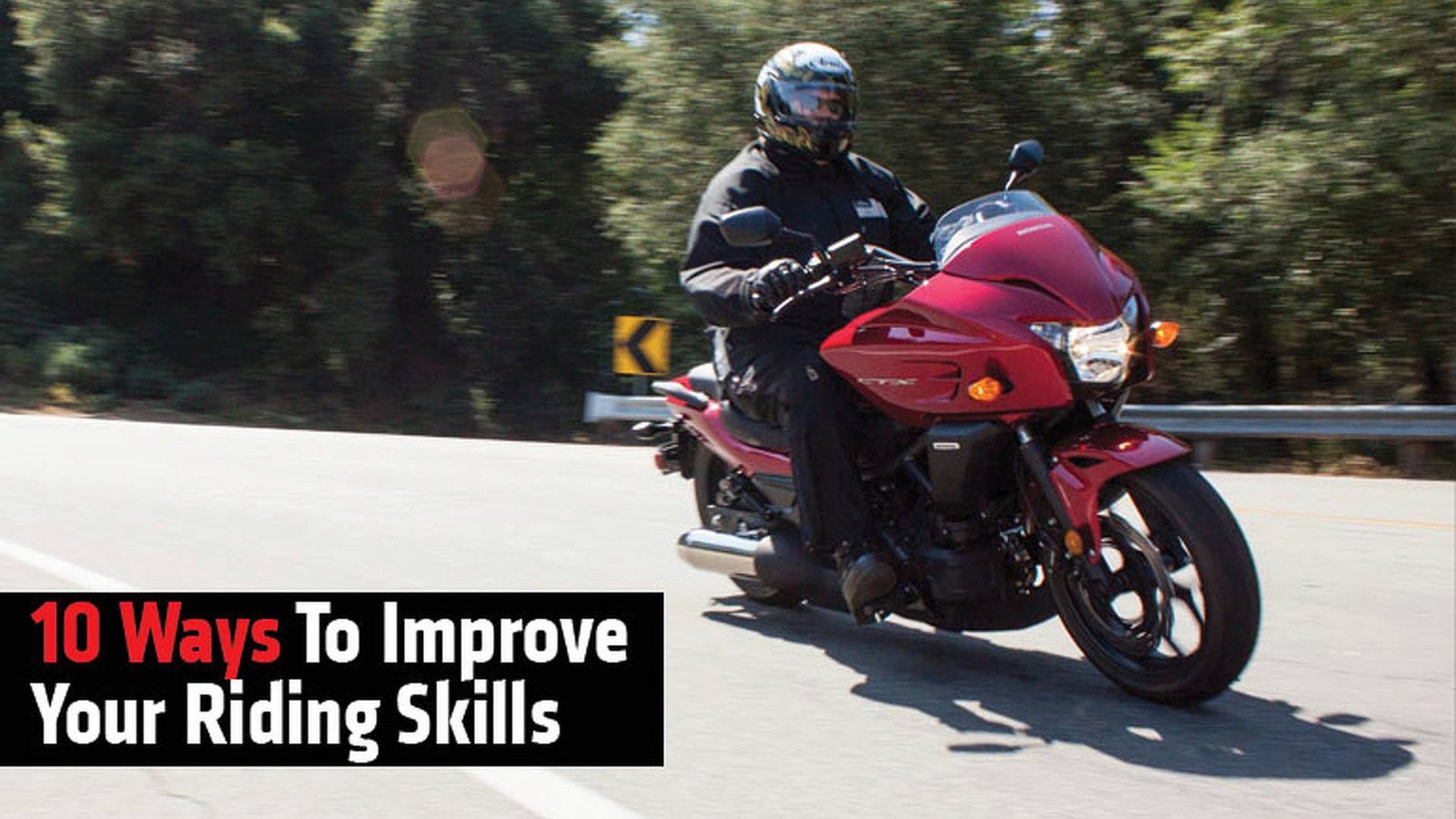
Leave a Reply